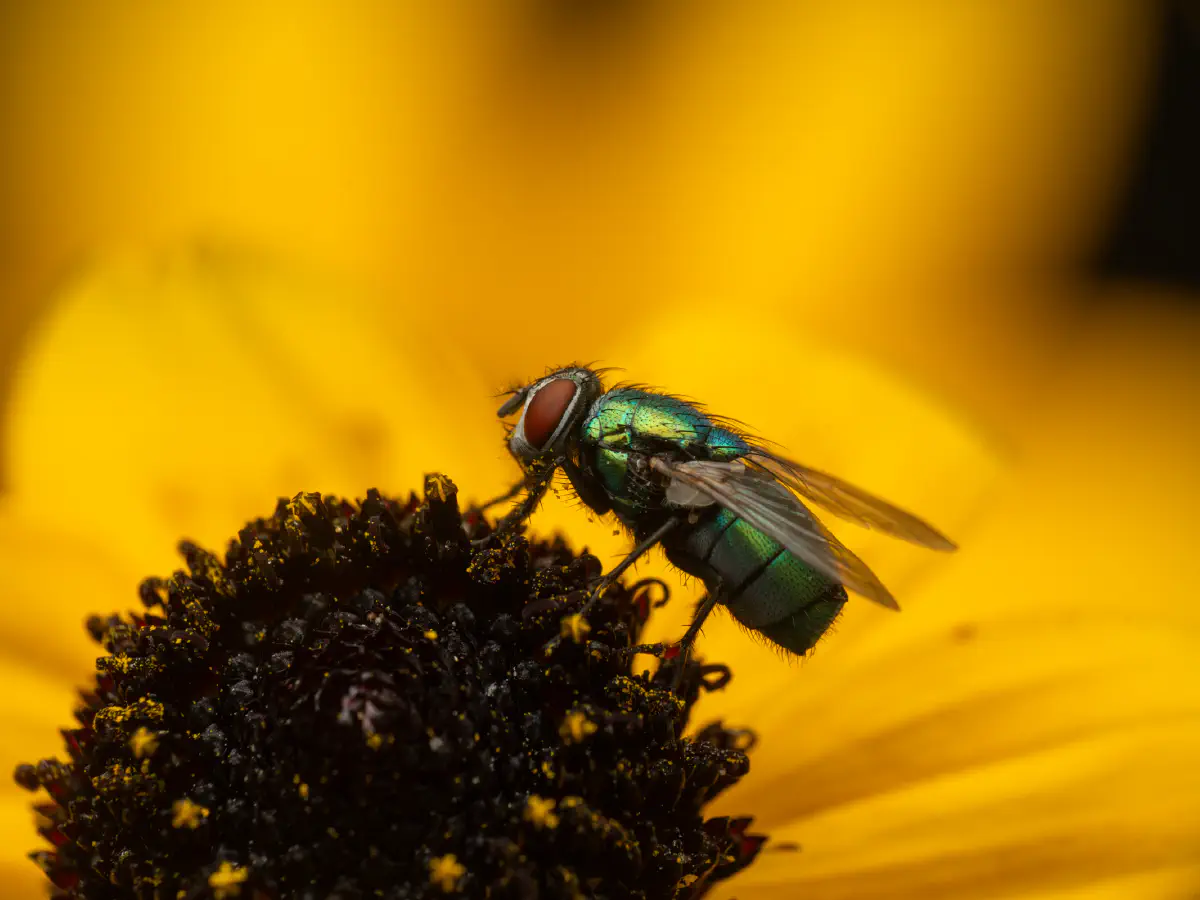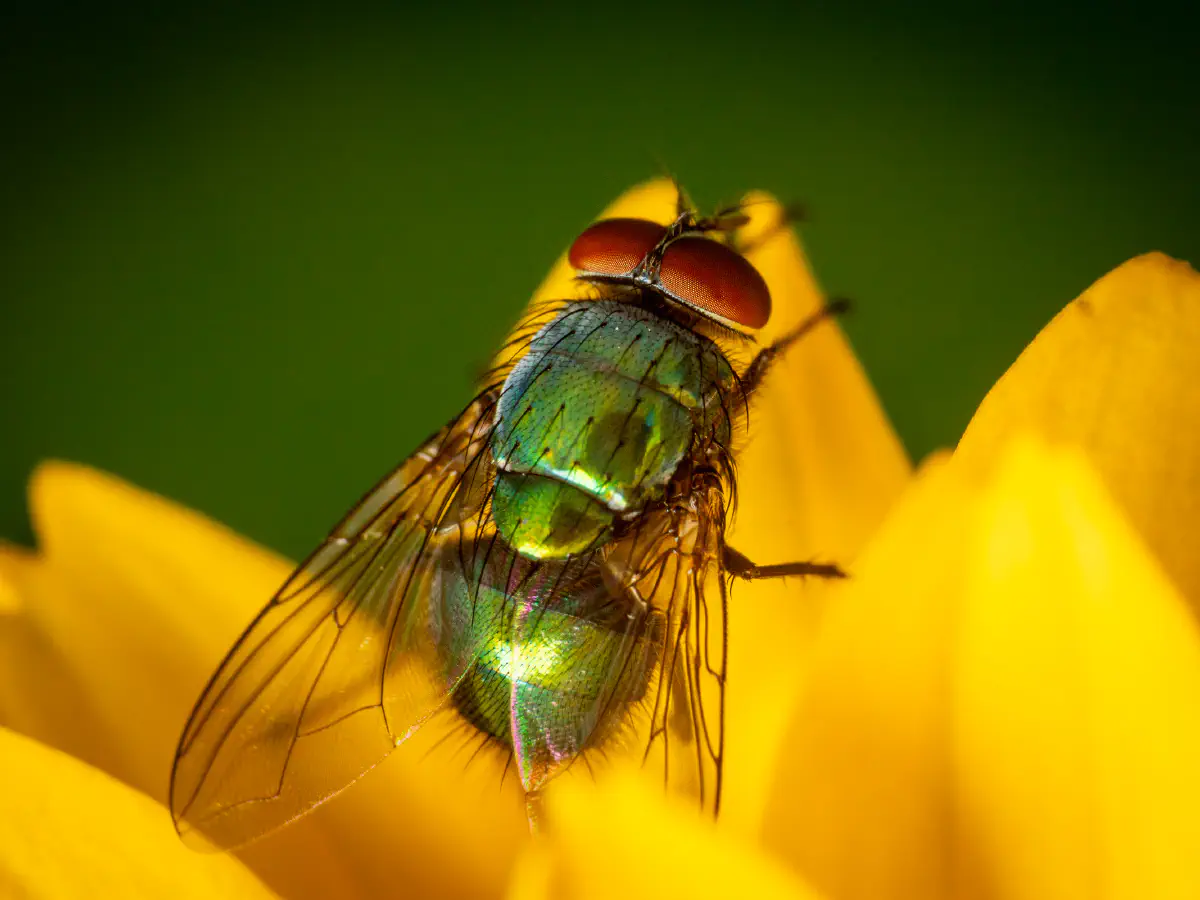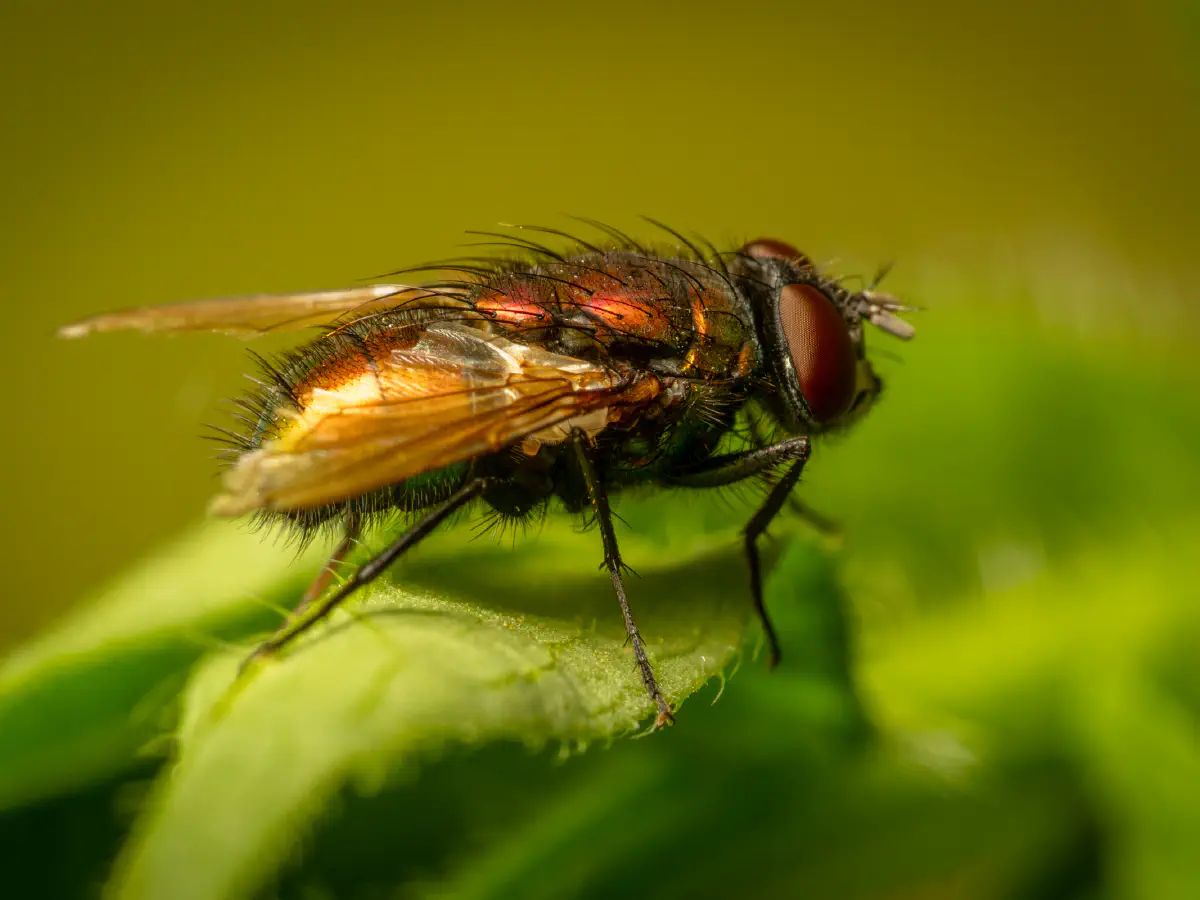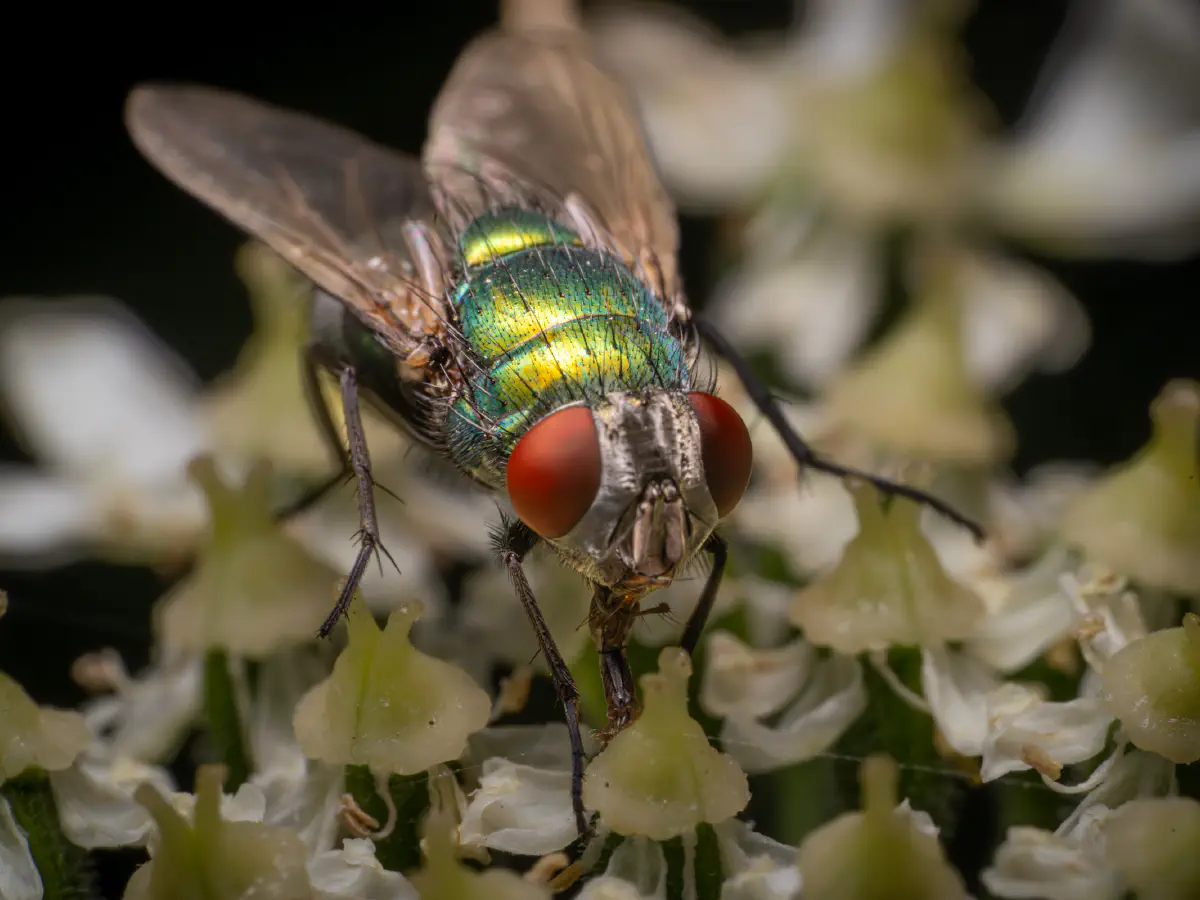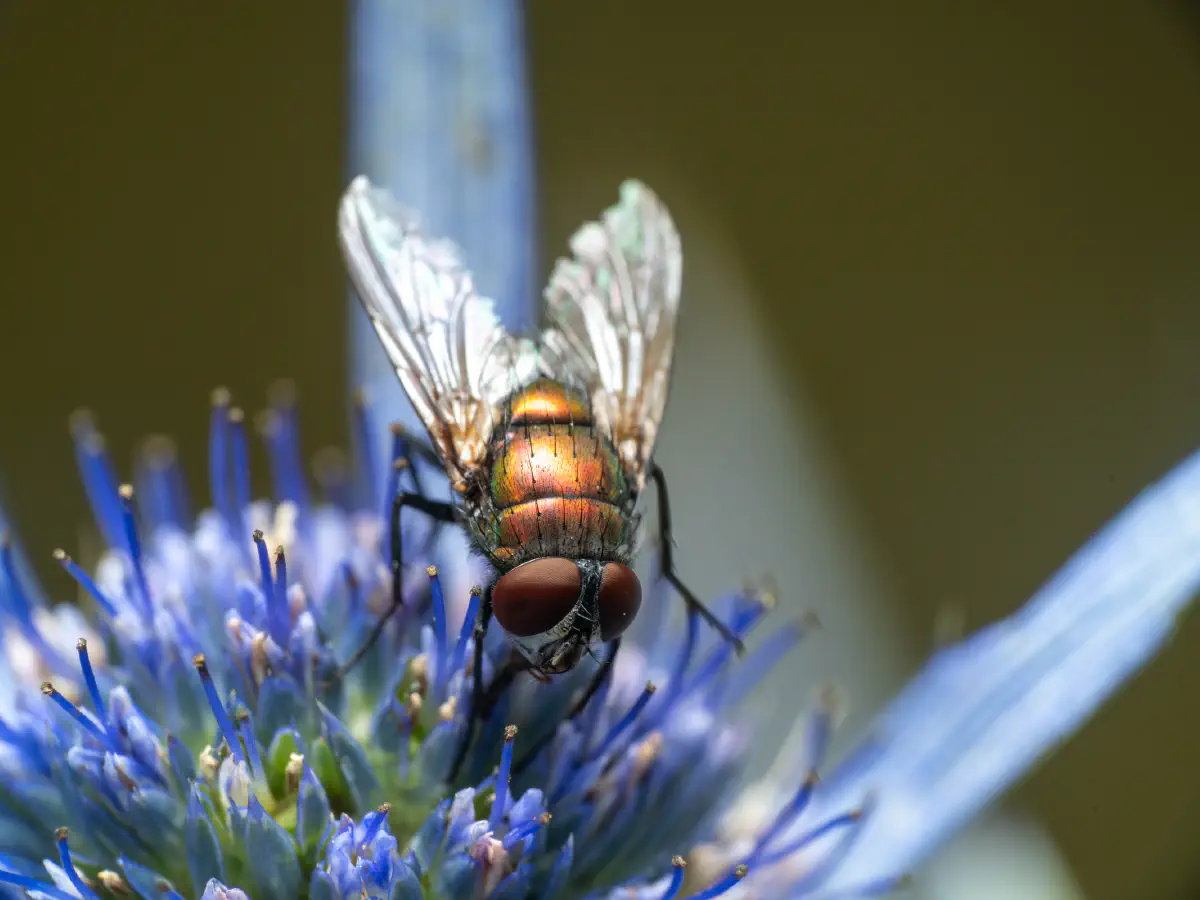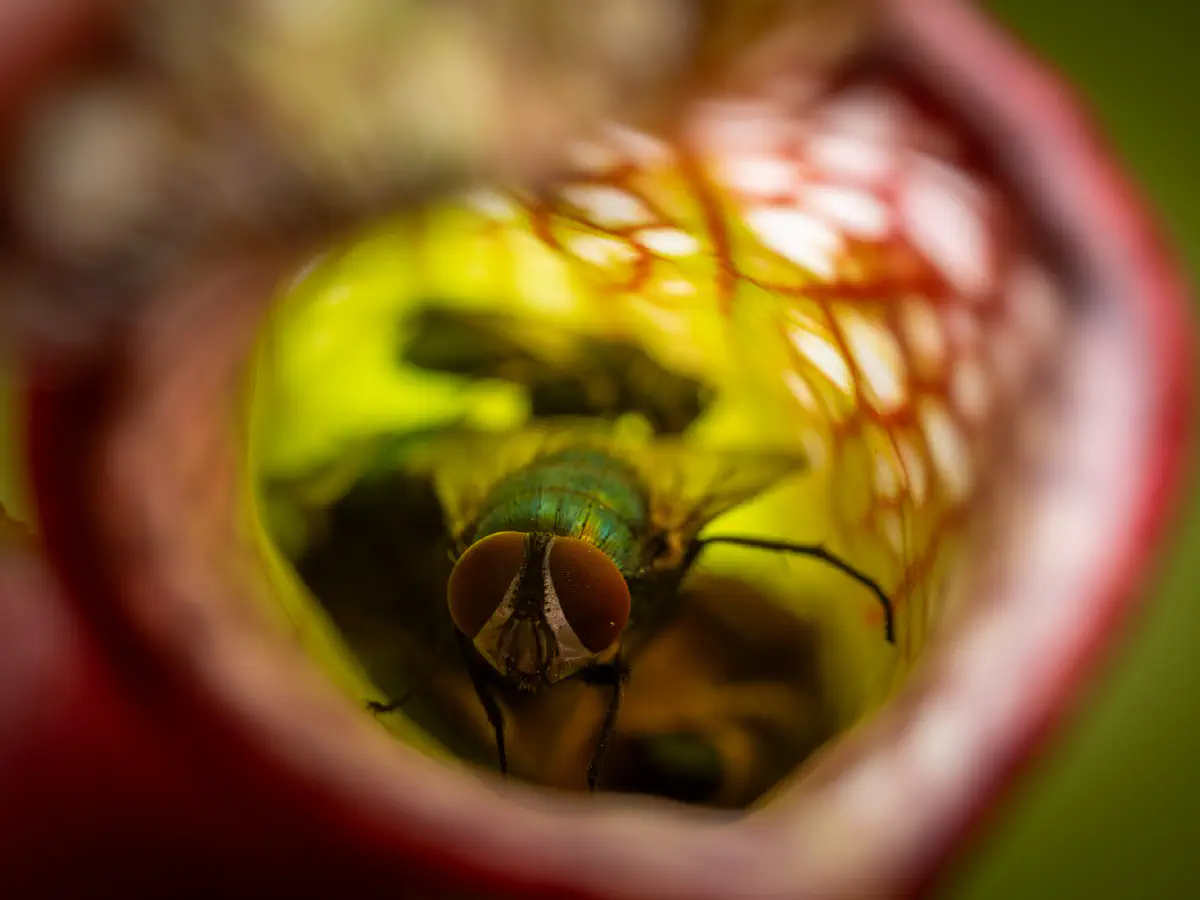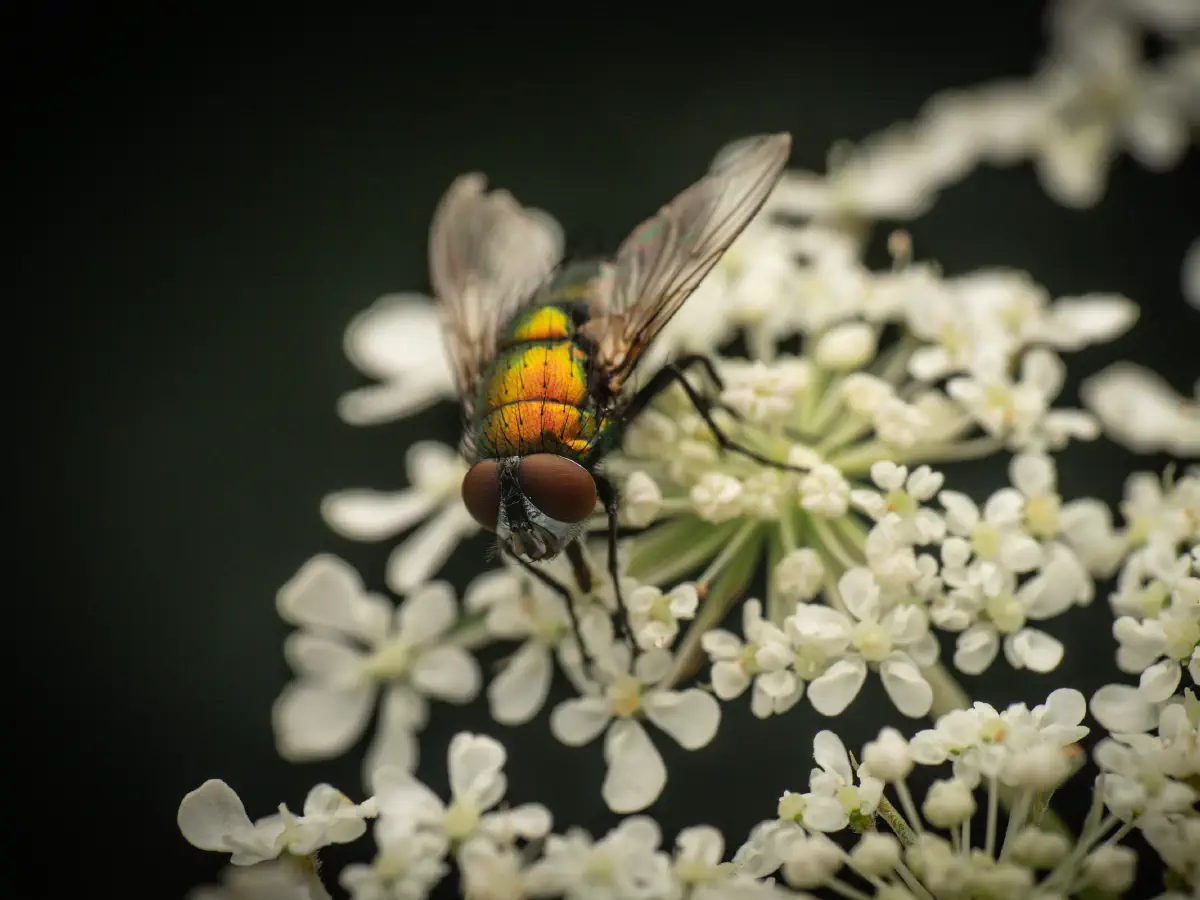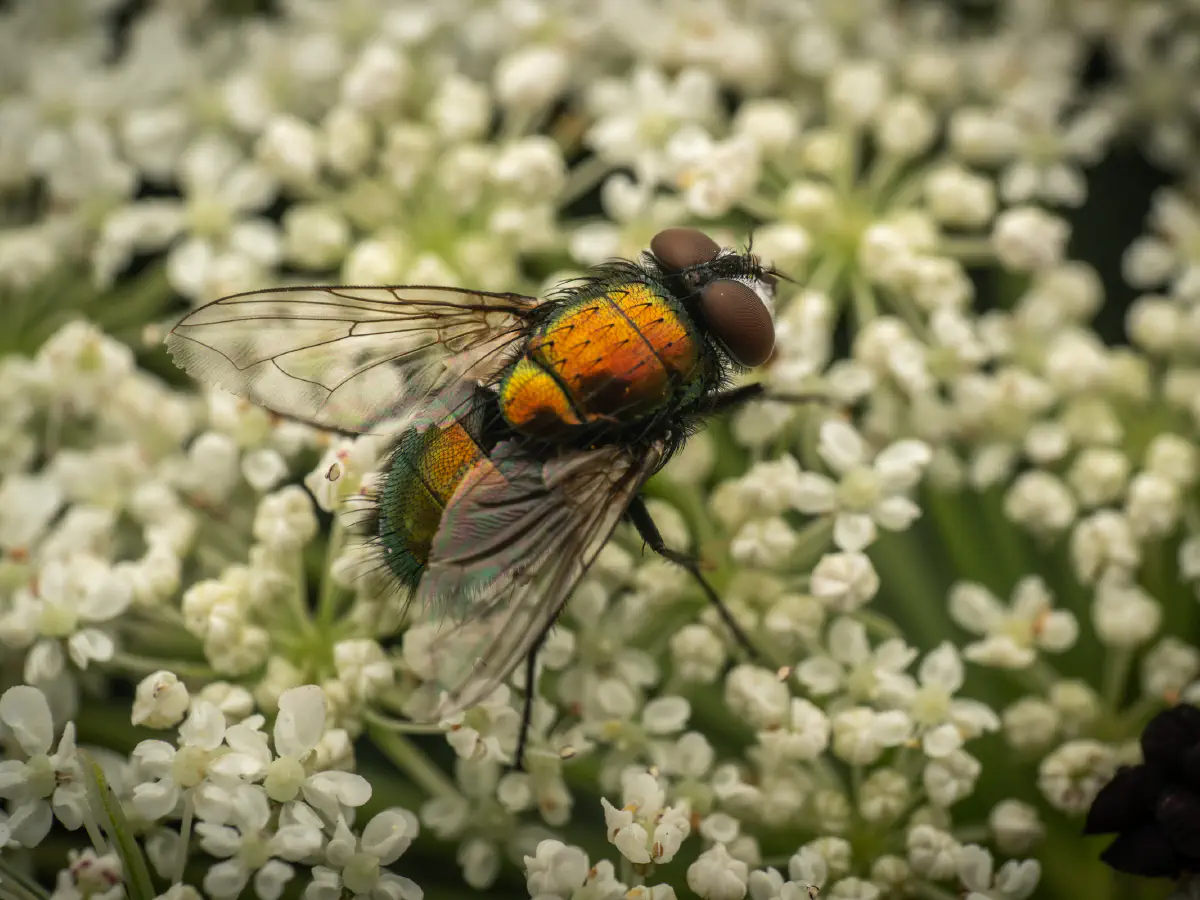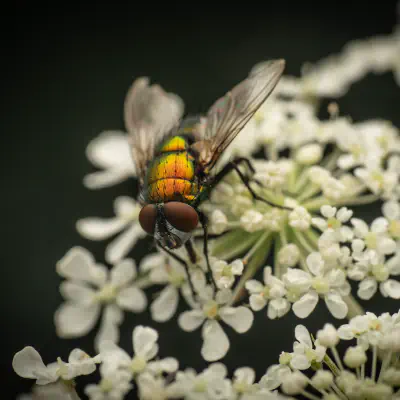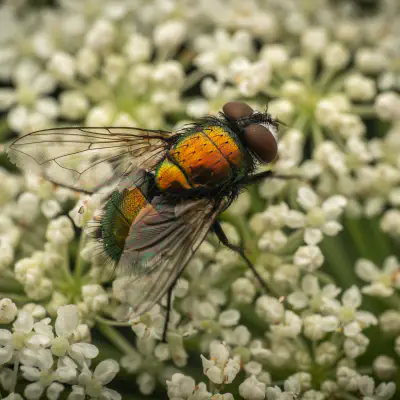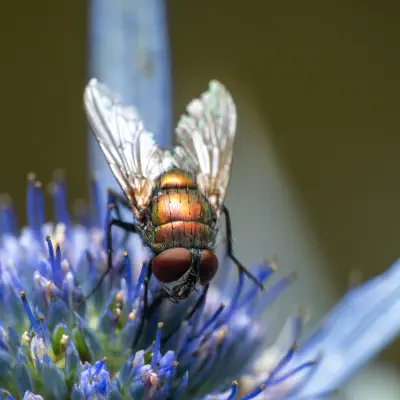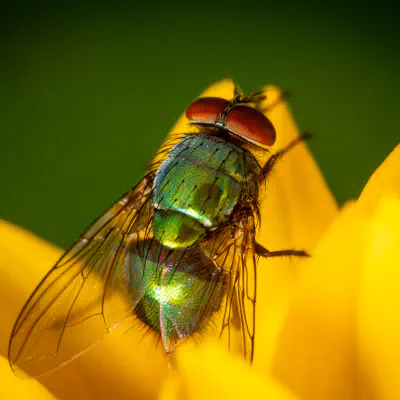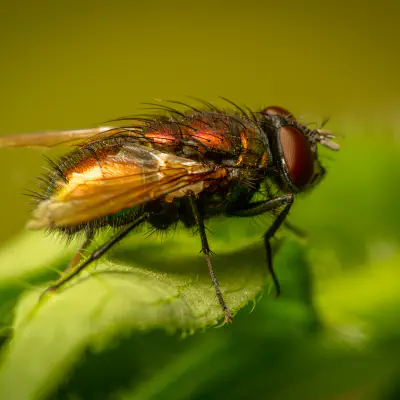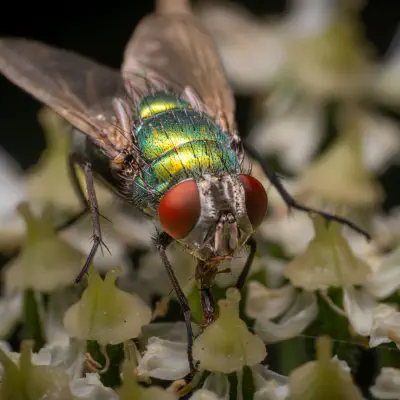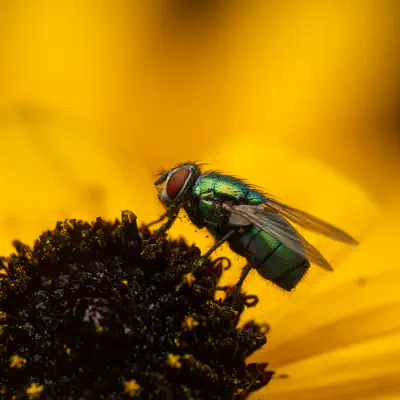The lifecycle of L. sericata is typical of flies in the family Calliphoridae. After the female deposits the egg, it hatches into a larva that passes through three instars as it grows, then enters prepupal and pupal stages (which can eclose quickly or overwinter depending on temperature) before emerging into the adult stage or imago. To start, the female lays a mass of eggs in carrion. The eggs hatch between nine hours and three days
after being deposited on the host, with eggs laid in warmer weather hatching more quickly than those in cooler weather. In this, they differ from the more opportunistic Sarcophagidae, which lay hatching eggs or completely hatched larvae into carrion and eliminate the time needed for the eggs to hatch. The flies are extremely prolific; a single female L. sericata typically lays 150−200 eggs per clutch and may produce 2,000 to 3,000 eggs in her lifetime.
The pale yellow or grayish conical larvae, like those of most blow flies, have two posterior spiracles through which they respire. The larvae are moderately sized, ranging from 10 to 14 millimeters long.
The larva feeds on dead or necrotic tissue for 3 to 10 days, depending on temperature and the quality of the food. During this period the larva passes through three larval instars. At a temperature of 16 °C (61 °F), the first larval
instar lasts about 53 hours, the second about 42 hours and the third about 98 hours. At higher temperatures, say 27 °C (81 °F), the first larval instar lasts about 31 hours, the second about 12 hours, and the third about 40 hours. Third-instar larvae enter a "wandering" stage and drop off the host to find an appropriate location with soft enough soil, where they bury themselves to enter a pupal stage, which usually lasts
from 6 to 14 days. Burial allows the pupa to more reliably avoid desiccation or predation. The larger the larva, the farther it is able to travel to find a suitable location to pupate; L. sericata is noted to be remarkably active and can travel over 100 feet before pupating. If the temperature is suitably low, however, a pupa might overwinter in the soil until the temperature rises. After emerging from the pupa, the adult
feeds opportunistically on nectar, pollen, feces, or carrion while it matures. Adults usually lay eggs about 2 weeks after they emerge. Their complete lifecycle typically ranges from 2 to 3 weeks, but this varies with seasonal and other environmental circumstances. L. sericata usually completes three or four generations each year in cold, temperate climates, and more in warmer regions.
